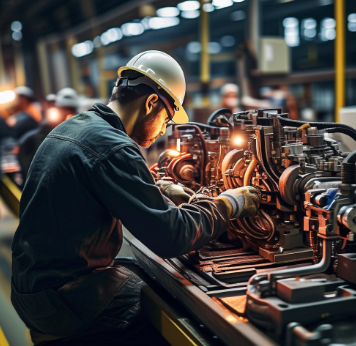Introduction: In the contemporary landscape of automation and technological advancement, the contrast between robotic manipulators, commonly known as manipulator or helpers, and traditional human labor has become increasingly prominent. This article aims to elucidate the key differences between these two modes of production and operation, focusing on their inherent characteristics, capabilities, and implications for various industries.
Physical Capabilities: One of the most evident differences lies in physical capabilities. Robotic manipulators are designed to perform tasks that require precise movements, repeated accuracy, and the ability to operate continuously without fatigue. They can handle heavy loads, work in extreme temperatures, and perform actions that might be dangerous for humans. In contrast, human workers possess adaptability, dexterity, and the ability to make nuanced decisions based on visual and tactile feedback, which robotic systems may lack.
Speed and Efficiency: Robotic manipulators generally work at a faster pace and with higher efficiency than human workers. They can be programmed to execute tasks with minimal interruption and are not subject to the limitations of human endurance or the need for breaks. Humans, on the other hand, may experience decreased productivity over time due to fatigue or distraction.
Cost and Investment: Initially, the implementation of robotic manipulators requires a significant capital investment, including the cost of purchase, installation, and programming. However, they can potentially offer a return on investment through increased productivity, reduced error rates, and lower long-term operational costs. Conversely, human labor involves ongoing expenses such as wages, benefits, training, and potential workplace accidents.
Skill and Training: Robotic manipulators require specialized technical skills and knowledge for programming, maintenance, and troubleshooting. These skills must be acquired through dedicated training and experience. Humans, on the other hand, can be trained for a variety of tasks with relative ease and can adapt to new situations with minimal additional training.
Flexibility and Adaptability: While robotic manipulators excel in repetitive tasks and can work around the clock, they often lack the flexibility to adapt to unexpected changes or to perform tasks that deviate from their programming. Human workers can adapt to changing environments, solve unforeseen problems, and take on a variety of different tasks within the same workday.
Quality and Consistency: Robotic manipulators can maintain a high level of quality and consistency throughout their operations. They are less prone to errors caused by human factors such as fatigue, distraction, or variability. Humans, while capable of producing high-quality work, may have fluctuations in performance due to personal factors or environmental influences.
Conclusion: The distinctions between robotic manipulators and human labor are numerous and impactful. While robots offer advantages in terms of speed, precision, and consistency, humans provide flexibility, adaptability, and the capacity for complex decision-making. The choice between them is often determined by the specific needs of an industry or task at hand. As technology continues to advance, it is likely that we will see more integration of robotic manipulators into the workforce, but the role of human labor will remain essential for tasks requiring human touch, creativity, and strategic thinking.

